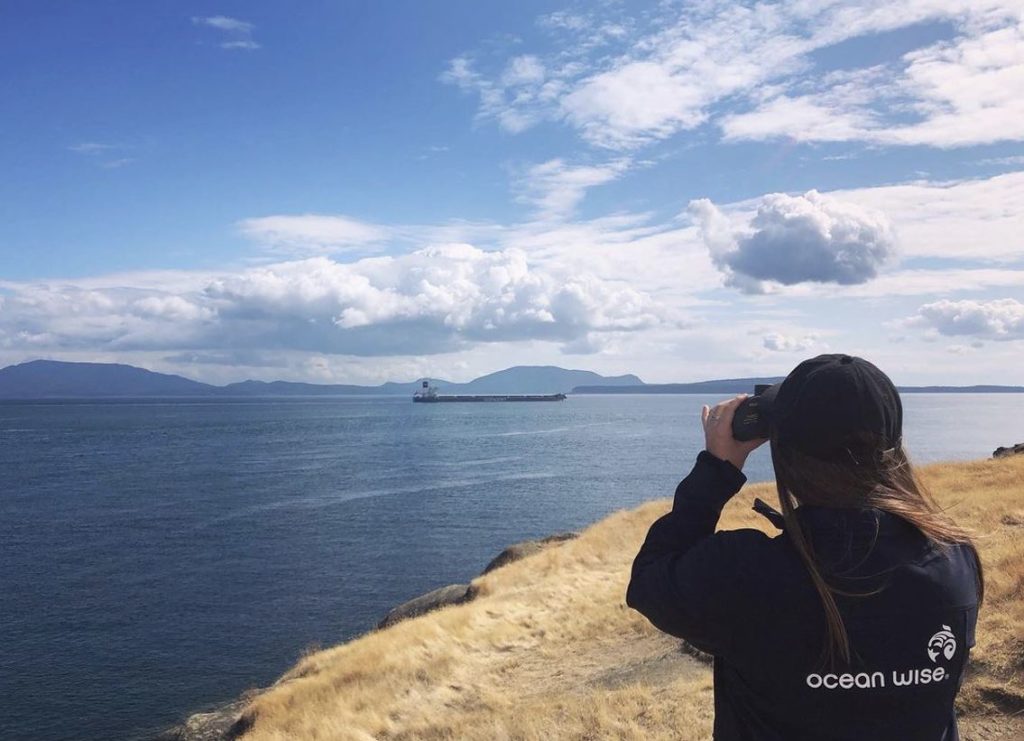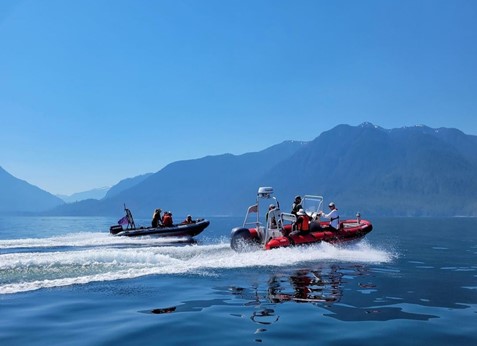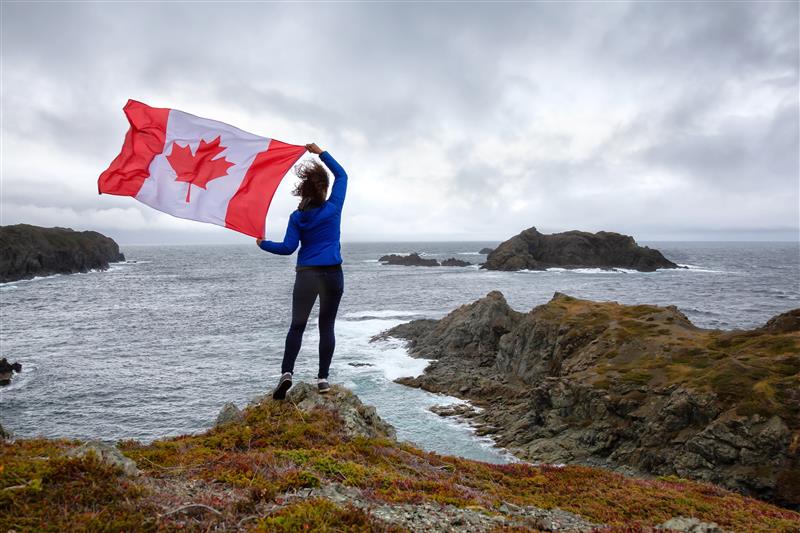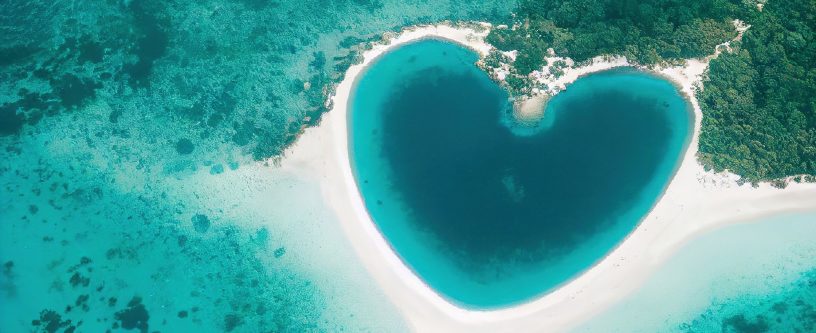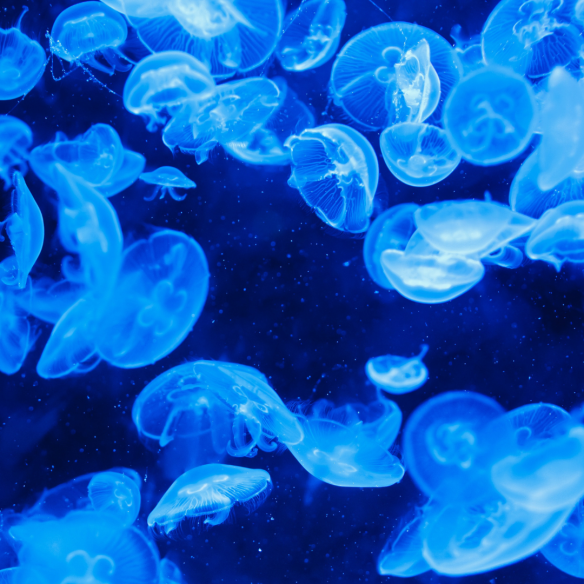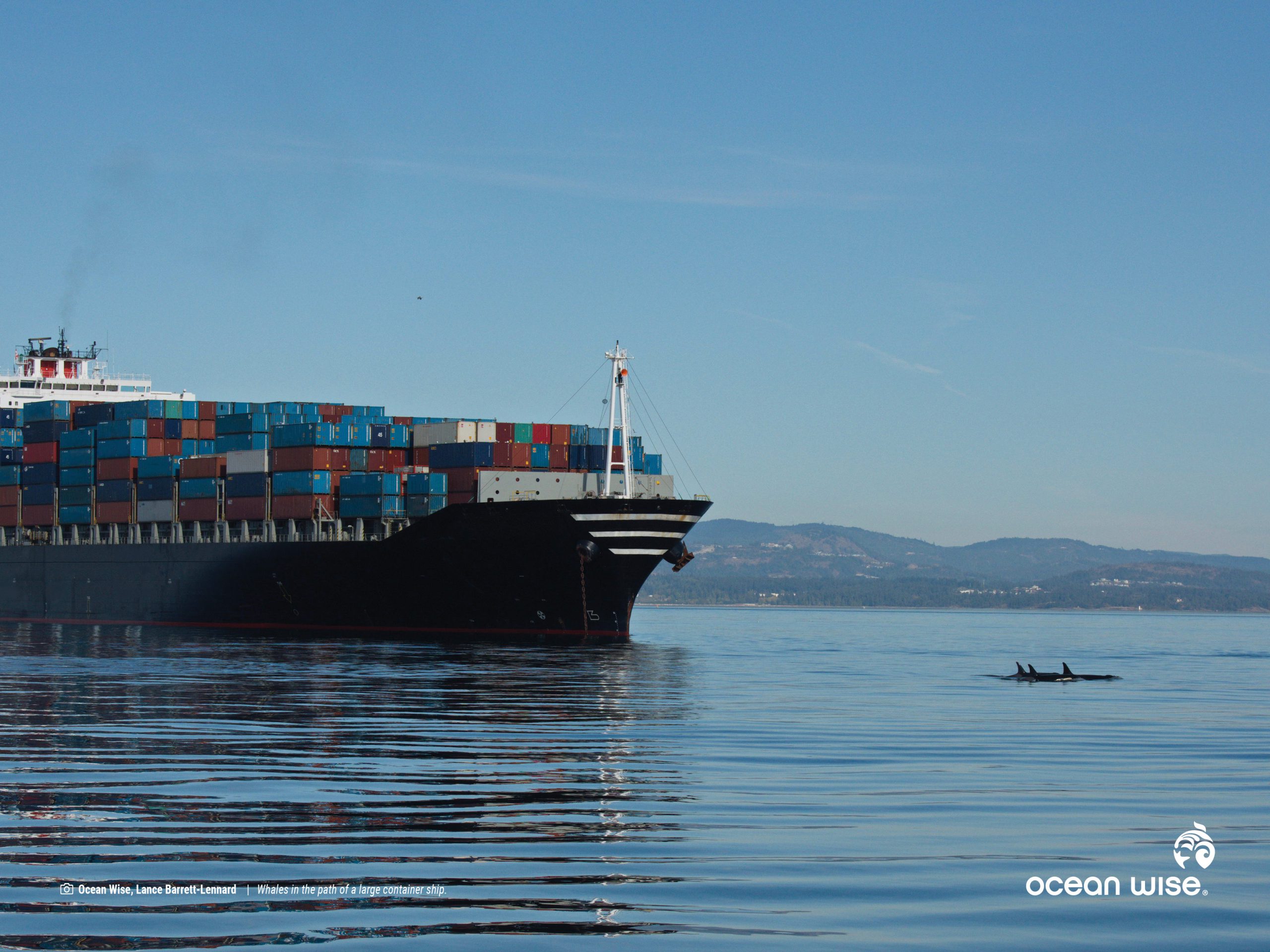
New Spotlight Report from Ocean Wise details impact of underwater noise on whales
Underwater Noise Pollution – why it matters and what you can do
We are constantly immersed in a world of sounds, from traffic and construction, to people talking and dogs barking. Underwater is no different, but sound plays a larger role. Because there is less light below the surface of the ocean, and because sound travels so efficiently in water, whales, dolphins and porpoises (collectively called cetaceans) have evolved to use sound for navigating, sensing their environment, finding prey, and communicating, forming a vital part of their lives. Cetaceans are used to the naturally occurring sounds in their environment, such as waves, currents, rain hitting the surface, and the signals of the animals themselves, such as snapping shrimp, chorusing fish, and of course, whale sounds. However noisy disturbances caused by many human activities, including marine vessels, can impact their very way of life.
The latest installment in Ocean Wise’s Ocean Watch Spotlight series: “Understanding Underwater Noise Pollution from Marine Vessels and its Impact on Whales, Dolphins and Porpoises”, dives into the world of underwater noise – how sound behaves in the ocean, the ways in which cetaceans use sound, and impacts from marine vessel traffic noise on cetaceans.

In the report, Ocean Wise presents four spotlights to highlight cetacean populations that have been impacted by noise pollution within North American waters: narwhals in the Arctic, killer whales in the Pacific, right whales in the Atlantic, and belugas in the Gulf of St. Lawrence.
Sound behaves differently underwater than in air, travelling over four times faster. Underwater noise is also affected by temperature, salinity and depth (water pressure). Other factors, from the variety of substrates in the area, to climate change induced pH changes, also impact the behavior of sound and noise underwater. All this to say – it is a very complex topic!
Nonetheless, vessel noise interferes with the ability of marine mammals to conduct their life functions effectively. Marine vessel traffic introduces unnatural noise into the lives of cetaceans, which can impact their behavior, displace them from critical habitats, cause stress and hearing loss, and mask an animal’s ability to produce and detect important sounds.

Spotlight 1 summary: Narwhals in the Arctic
In the Arctic, climate change is speeding the melting of ice, transforming the landscape and opening up more oceanic routes for vessel traffic. A study found that narwhals, a shy, sound-dependent species that is sensitive to disturbances and has traditional summering grounds in the middle of shipping routes, will be particularly vulnerable to these changes.
Spotlight 2 summary: Killer whales in the Salish Sea
In the Salish Sea in the Pacific Northwest, between southern B.C. and northern Washington, lives a population of endangered Southern Resident Killer Whales (SRKW). With only 74 individuals remaining, and noise pollution as a key threat to their survival, a program was developed to mitigate threats from shipping activities. The Port of Vancouver’s Enhancing Cetacean Habitat and Observation (ECHO) program looked at whether vessel slow-down trials would have positive impacts on the SRKW population. This voluntary slow-down study took place within a SRKW hotspot and showed that vessel slow-downs decreased the underwater noise in nearby habitats.
Spotlight 3 summary: Right whales in the Atlantic
In 2001, post-9/11, stress levels in endangered right whales in the Atlantic were far lower than usual when the ocean became unusually quiet as air and marine traffic was halted. While data on underwater noise during the COVID-19 pandemic are still coming in, it seems likely that similar positive effects will be seen, not only for right whales but also for other cetaceans throughout the oceans.
Spotlight 4 summary: Belugas in the St. Lawrence Estuary
A recent Ocean Wise study looked at impacts of underwater vessel noise on an endangered population of Belugas in the St. Lawrence Estuary, off the coast of Quebec, Canada. Belugas have a specific call-type to keep contact within groups and between mother-calf pairs. The past decade has seen vast declines in this beluga population, and high infant mortality. Newborn belugas have particularly weak vocalizations, which are more susceptible to masking effects from underwater noise. This is a problem, as mothers may not hear their calves if they become separated from them.
Underwater noise produced by human activities, particularly vessel traffic, is detrimental to many marine creatures, especially cetaceans. Thankfully, reducing harmful impacts can be achieved by simply turning down the noise! There are many steps that can be taken to reduce underwater noise pollution and improve the underwater soundscape for the species that live there.
What can you do to reduce underwater noise pollution?
Individual and Organization Actions
❏ Slow down to reduce the noise produced by your boat.
❏ Clean your hull and maintain your propeller.
❏ Modify your route to avoid known whale areas, such as SRKW critical habitat.
❏ When viewing cetaceans from a boat, follow the Be Whale Wise Guidelines to avoid disturbing or displacing them.
❏ Buy local products, such as fruits and vegetables grown in your own country. Avoid contributing to marine traffic by reducing unnecessary consumption (the majority of shipping is for the transport of goods).
Government Actions and Policy
❏ Enforce vessel slow downs and ship engine/hull maintenance to reduce underwater noise.
❏ Support the Port of Vancouver’s ECHO program which has introduced vessel slowdowns and other measures to reduce ship noise.
❏ Roll-out the ECHO program model across ALL Canadian ports.
❏ Support research to improve ship technology (hull and propeller design, construction and operation) to reduce underwater noise.
❏ Require new ships to be built with optimized noise reduction designs, including propellers with reduced cavitation.
❏ Implement and enforce “acceptable” underwater noise emission specifications for different vessel classes that new vessels must adhere to.
❏ Require manufacturers to make data on the underwater noise output of their boat propulsion systems (i.e., outboard engines and stern drives) publicly available as a condition of sale in Canada.
❏ Make underwater noise measurements a mandatory part of sea trials for vessels constructed in Canada.
❏ Create legally enforceable “quiet sanctuaries” that restrict motorized vessels and other noise-creating human activities, especially in the Arctic.
❏ Data exists that allows the development of a vessel ranking system. Once ranking is complete, implement a gradual phase out of vessels that ranked poorly.
❏ Incentivize use of quieter vessels through a tiered port fee system, as done at the Vancouver Fraser Port Authority (quieter vessels pay lower port fees).
❏ Make requirements to limit noise (e.g., slower speed, use of improved technology and design) mandatory for vessels entering or traversing Canada’s waters.
Read Ocean Wise’s full report for more in-depth information on all of these topics and resources for further reading.
Posted February 9, 2021 by Ocean Wise


